Current Mars climate theory is that, like Earth, Mars long ago had a magnetic field, protecting its atmosphere. For still unknown reason, about 4 billion years ago, this magnetic field disappeared, which caused atmosphere to escape to space under solar winds flows. In the next 500 million years, from warm, wet environment, Mars turned to the cold dry place we know today.
As temperature fell, water partly sublimed and was lost in space, but partly wentunder surface in the form of ice. In some periods, because of tectonic activities and asteroid bombardments, great flows af water formed famous Mars canyon systems. One of them is Kasei Valles.
This canyons system is several thousands kilometer long and in some places its width is more than 500 km wide. They formed about 3.5 billion years ago, well after magnetic field loss.
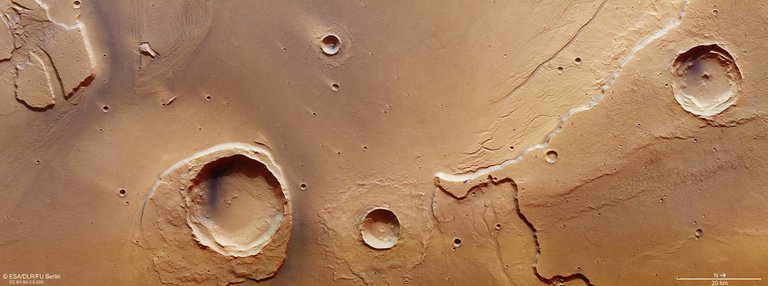
Image: ESA
Above image, taken by Mars Express, shows area at Kasei Valles estuary. The largest impact crater diameter is 25 kilometers. The most part of materials thrown away by impact was washed out by water flows, but part in the lower current formed island. Meanwhile, materials thrown from neighbouring crater are intact, which means that it was formed after floodings era. Its topography shows, that during the impact, there was water ice layer under the surface.
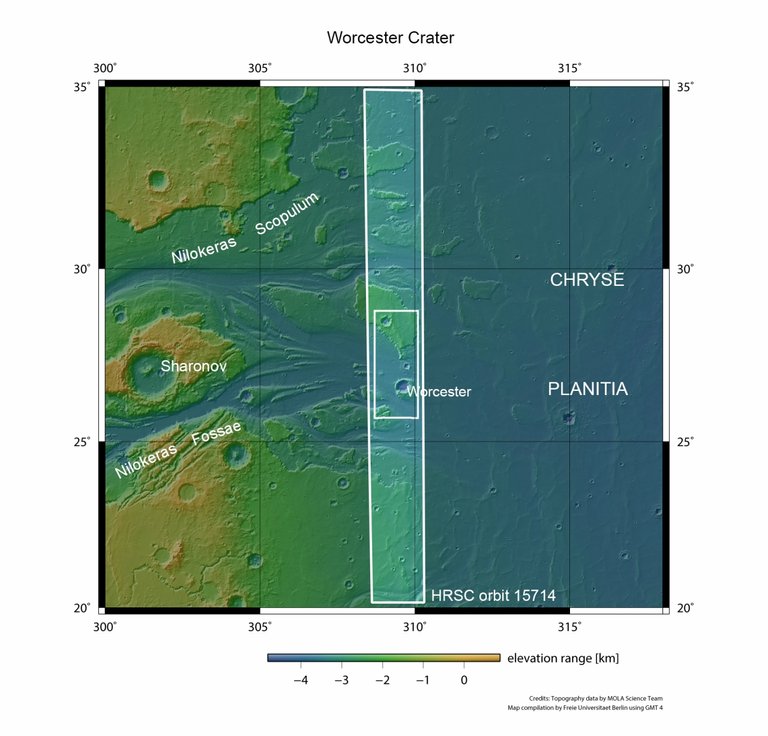
Image: ESA
The smallest craters were formed much later, when Mars finally turned to familiar dry and cold desert world and lost its atmosphere.
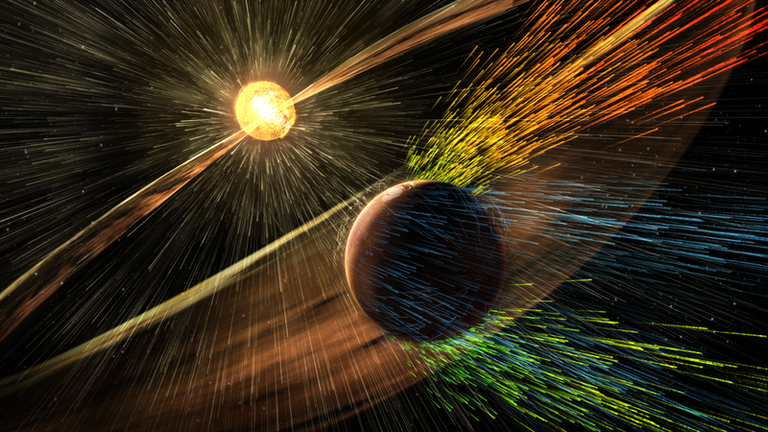
Image: NASA/GSFC Solar storm stripping ions from Mars upper atmosphere
Last studies, made by ESA Mars Orbiter and NASA MAVEN spacecrafts, not only confirmed the theory that solar winds are responsibly for atmosphere loss, but also measured the rate at which it being lost now.
But this landscape can change. Last week NASA's Planetary Science Division hosted "Planetary Science Vision 2050 Workshop" where researchers from all over the world talked about a future of space exploration.
In the most interesting discussion "A Future Mars Environment for Science and Exploration", Dr. Jim Green, the Director of NASA's Planetary Science Division suggested that by deploying a marnetic dipole at the Mars L1 Lagrange Point, an artificial magnetosphere could be formed for shielding planet from solar wind and charged particles radiation.
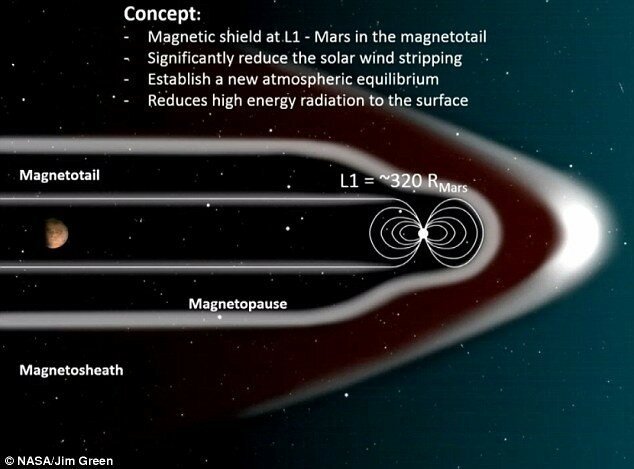
Image: NASA/Jim Green
The proposal is that inflatable structure, deployed at Mars-Sun L1 Lagrange Point, could create a magnetic dipole field at a level of 1 - 2 Tesla. diverting flux of charged particles from the Sun. According to MAVEN estimates, the two regions where most of atmosphere is lost are northern polar cap and equatorial zone, where asa much as 0.1 kg/sec of oxygen ions is lost.
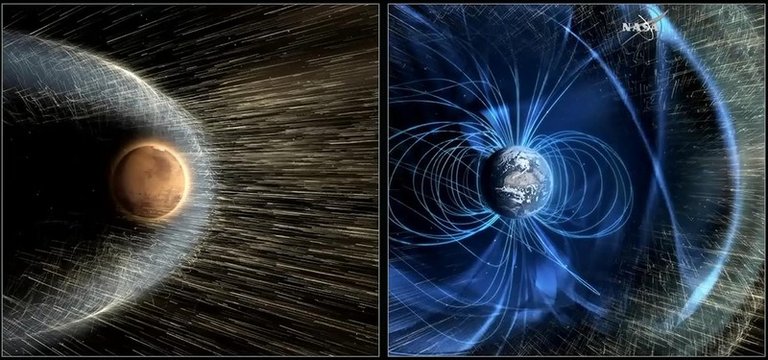
According to Green estimates, with atmosphere's loss stopped, this will cause average year temperature increase of about 4 C< which would melt CO2 caps and trigger greenhouse effect, warming the atmosphere further and melting water ice caps.
Dr. Green (the name says all!) said:
A greatly enhanced Martian atmosphere, in both pressure and temperature, that would be enough to allow significant surface liquid water would also have a number of benefits for science and human exploration in the 2040s and beyond. Much like Earth, an enhanced atmosphere would: allow larger landed mass of equipment to the surface, shield against most cosmic and solar particle radiation, extend the ability for oxygen extraction, and provide "open air" greenhouses to exist for plant production, just to name a few
For further reading: https://phys.org/news/2017-03-nasa-magnetic-shield-mars-atmosphere.html
This is a very cool idea, Thanks! I want to run around on Mars in my shirtsleeves... ;) 😄😇😄

And snorkeling in Gale crater...
Excellent work dear friend @busser congratulations, thanks for sharing
It's great to see the quality and originality of content continually improve on Steemit. Thanks
Fascinating. I am doing an art project at the Great Sand Dunes in Colorado. I mention this because NASA scientists study these dunes due to their similarity to the dunes on Mars. By extension then, I am most interested in Mars and I thank you for this post.
That's an awesome article! Would love to see a test trail and a sphere at the Lagrange point. Colonization of Mars is just the first step
This idea seems to me more viable than generators on the poles. Would like to see some calculations about cost of keeping the thing at L1 (it's dynamic place).
It's as if SyFy series Expanse is coming to life.
SOHO and ACE are two spacecraft "observatories" operating at Earth's L1 point. I do not know their operational budget, but it's feasible.